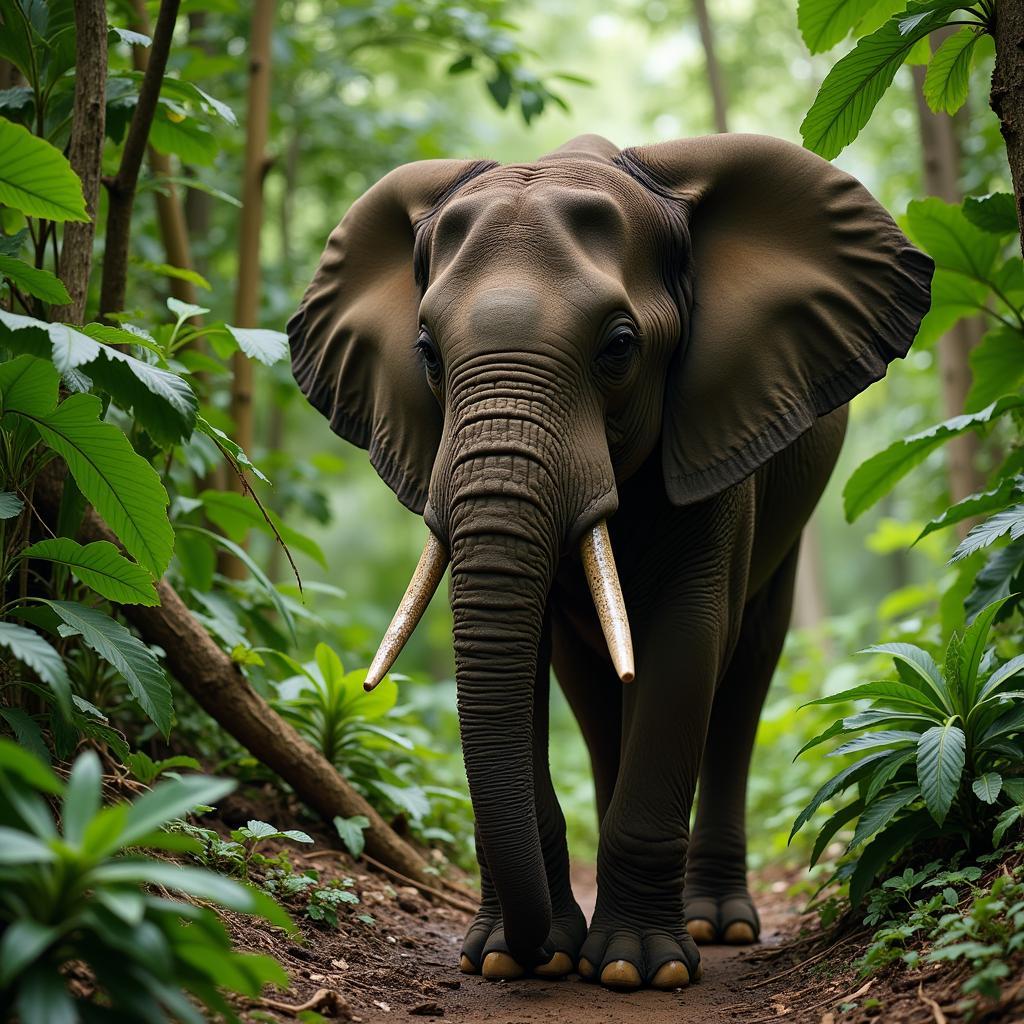African Elephants and Their Climatic Regions
African elephants, majestic giants of the savanna, are intrinsically linked to the diverse climatic regions they inhabit. Their distribution across Africa is largely determined by the availability of resources like food and water, which are directly influenced by climate. Understanding the interplay between African elephants and their climatic regions is crucial for their conservation.
The African elephant’s range spans a variety of landscapes, from lush forests to arid deserts. These diverse habitats offer unique challenges and opportunities for the elephants, shaping their behavior, social structures, and ultimately, their survival. Their ability to thrive in such varied climates is a testament to their adaptability. After understanding their basic needs, we can better understand the effects of climate change. Let’s dive into the specifics of how these magnificent creatures adapt to the different climates they call home. Check out this slide share for an overview of African climate zones: African climate slide share.
The Savanna Elephants and Their Adaptation to Semi-Arid Climates
The majority of African elephants inhabit savanna regions, characterized by distinct wet and dry seasons. These semi-arid areas present challenges in terms of water availability and food scarcity during the dry season. Savanna elephants have evolved remarkable adaptations to cope with these harsh conditions. They can travel long distances in search of water, digging for water in dry riverbeds, and even using their tusks to strip bark from trees to access moisture. Their large ears also play a crucial role in thermoregulation, helping them dissipate heat in the scorching sun.
What challenges do savanna elephants face? The increasing frequency and intensity of droughts due to climate change pose a significant threat to savanna elephants. This can lead to increased competition for dwindling resources and even mortality.
How do elephants survive in the dry season?
Savanna elephants have developed a range of strategies to survive dry seasons, including migrating long distances to find water and digging for water in dry riverbeds. They can also go without water for extended periods.
 Savanna Elephant Digging for Water
Savanna Elephant Digging for Water
Forest Elephants and Their Rainforest Habitat
Forest elephants, a distinct subspecies, reside in the dense rainforests of Central and West Africa. These ecosystems offer a more stable climate with abundant rainfall and vegetation. However, navigating the dense undergrowth presents its own set of challenges. Forest elephants are smaller than their savanna counterparts and have straighter tusks, better suited for moving through dense forests. Their diet consists primarily of fruits, leaves, and bark, contributing to seed dispersal and forest regeneration.
How do forest elephants impact their environment? They play a vital role in maintaining the health and biodiversity of rainforest ecosystems by dispersing seeds and creating clearings that allow sunlight to reach the forest floor.
 Forest Elephant in Dense Vegetation
Forest Elephant in Dense Vegetation
The Impact of Climate Change on African Elephant Populations
Climate change presents a significant threat to both savanna and forest elephants. Rising temperatures, altered rainfall patterns, and increased frequency of extreme weather events can exacerbate existing challenges like habitat loss and human-wildlife conflict. The shrinking of water sources and decreased food availability due to prolonged droughts can lead to increased competition and even starvation. In rainforest regions, changes in rainfall patterns can affect the fruiting cycles of trees, impacting the food supply for forest elephants.
Where do African elephants find refuge from climate change? Some elephant populations find refuge in higher elevation areas or in areas with more reliable water sources. However, these areas are often limited, leading to increased competition. The future of the African elephant will depend on our ability to mitigate climate change and protect their habitats. You can discover the location of African grasslands, another important habitat, here: African grassland location.
What can be done to protect elephants from climate change?
Conservation efforts focused on protecting and restoring elephant habitats, mitigating human-wildlife conflict, and addressing the root causes of climate change are crucial for ensuring the long-term survival of African elephants. Understanding the impact of climate change on African fruit trees is crucial, as these are a vital food source for elephants. You can find a helpful list here: African fruit trees list.
Dr. Aminata Kone, a renowned wildlife ecologist specializing in African elephants, explains, “Climate change is not just a future threat, it’s a present reality for elephants. We are already seeing the impacts on their populations and behavior.” Another expert, Dr. Joseph Nkosi, a conservation biologist with decades of experience in African ecosystems, adds, “The interconnectedness of climate, habitat, and elephant survival is undeniable. Protecting their habitats is crucial for their future.” African landscapes, particularly those inhabited by elephants, are under immense pressure from climate change. Check out some captivating backgrounds here: African landscape background.
Conclusion
African elephants, integral to the ecosystems they inhabit, are facing unprecedented challenges due to the changing climate. Understanding the complex relationship between African elephants and their climatic regions is crucial for developing effective conservation strategies. By addressing the impacts of climate change and protecting their habitats, we can help ensure the survival of these magnificent creatures for generations to come.
FAQ
- How do African elephants adapt to different climates?
- What is the impact of climate change on African elephants?
- What are the main threats to African elephant populations?
- How do savanna elephants differ from forest elephants?
- What conservation efforts are being undertaken to protect African elephants?
- How does the availability of water affect elephant distribution?
- What is the role of elephants in their ecosystems?
Need Help? Contact Us!
For further assistance or information, please don’t hesitate to reach out to us:
- Phone: +255768904061
- Email: kaka.mag@gmail.com
- Address: Mbarali DC Mawindi, Kangaga, Tanzania
Our customer service team is available 24/7 to assist you.